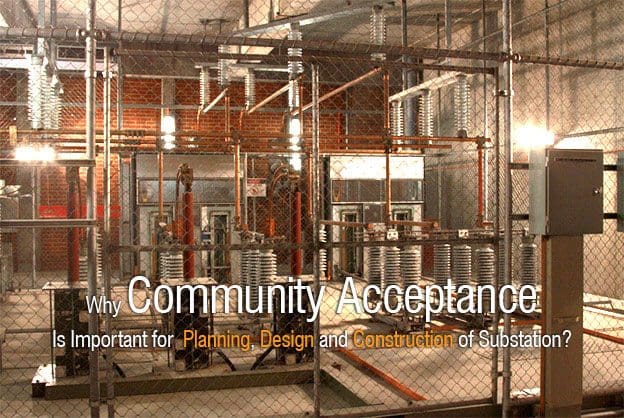
Power Substation that converts electricity from 66kV down to 11kV (photo by Marcus Wong via Flickr)
Importance Of Community Acceptance
Community acceptance generally encompasses the planning, design, and construction phases of a substation as well as the in-service operation of the substation. It takes into account those issues that could influence a community’s willingness to accept building a substation at a specific site.
Government bodies typically require a variety of permits before construction may begin.
For community acceptance, several considerations should be satisfactorily addressed, including the following:
- Noise
- Site preparations
- Aesthetics
- Fire protection
- Potable water and sewage
- Hazardous materials
- Electric and magnetic fields
- Safety and security
What does IEEE Standard 1127–1998 say?
The noise level at which transformers become an annoyance is not necessarily dependent upon the level of the transformer noise but may depend upon the differential between ambient and added noise.
Noise attenuation with distance is logarithmic, and even where large buffer zones exist, the noise levels from larger transformers can exceed 25–30 dBA at 300 m or more. In quiet rural areas, and some suburban areas, low night time ambient sound levels of 30 dBA or less are possible.

Trihal - Dry-type transformer 1600 kVA 10/0,42kV connected to busbar system Canalis KTA 2500A (Schneider Electric)
The higher background ambient noise levels resulting from high traffic volume, business and industrial activity and the normal household activities such as children playing, dogs barking, lawn mowing, etc., will be missing during the evening and night time hours.
On warm summer nights, nearby residents can find the transformer noise level to be annoying (for sleeping with open windows, sitting outside, etc.).
Objections to substation noise levels below those set by governmental regulations can also occur in urban areas. However, the benefit resulting from higher ambient background levels of 35–45 dBA or more (night time) can be offset by the closer proximity of nearby residents (in some cases less that 30 m).
Community acceptance of noise levels may not always have a technical basis. Residents who are annoyed simply by the presence of the substation may find perceived excessive noise levels to be a tangible factor upon which to base a complaint.
References:
- Electric Power Engineering Handbook by Leonard L. Grigsby (Get it from Amazon)
- IEEE Standard 1127–1998